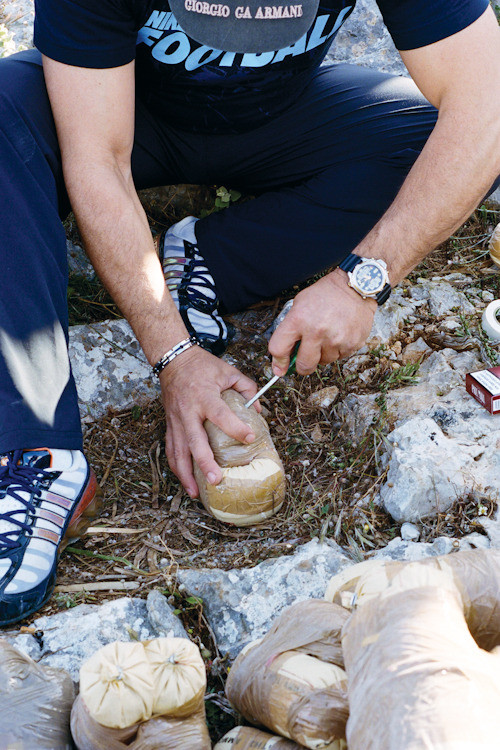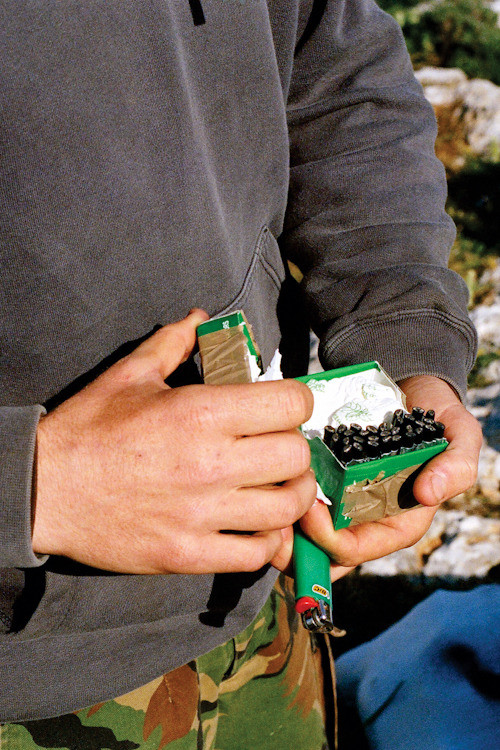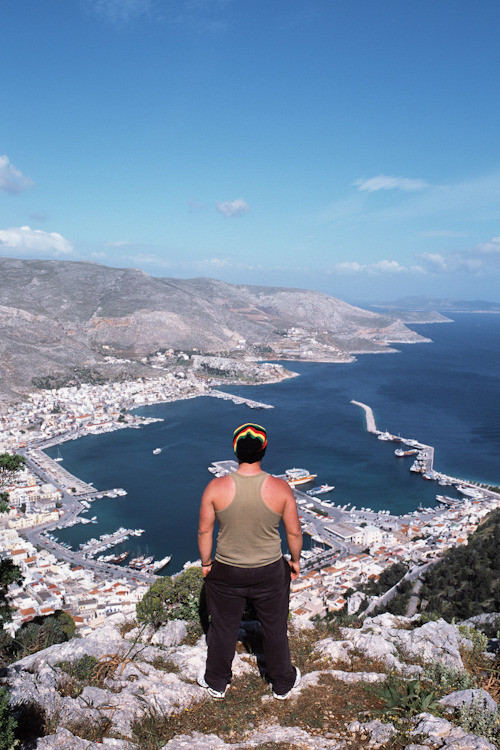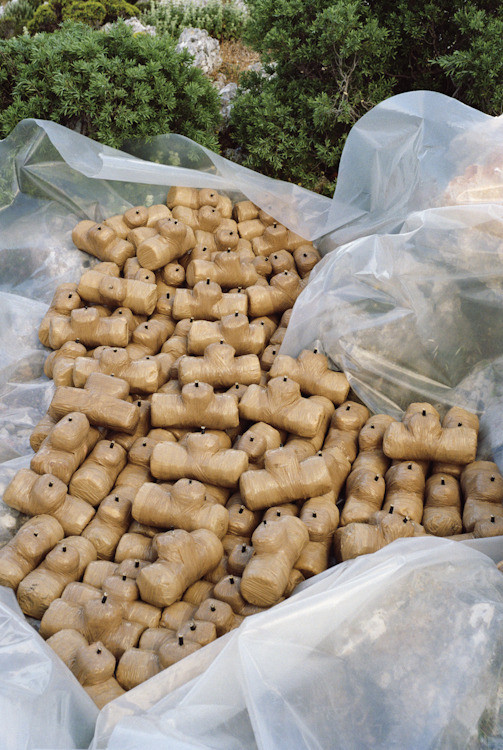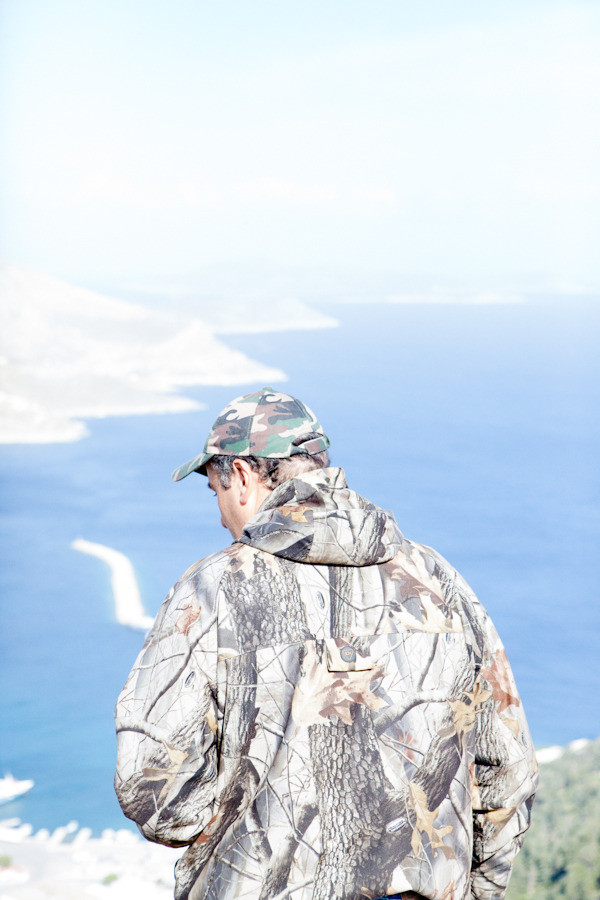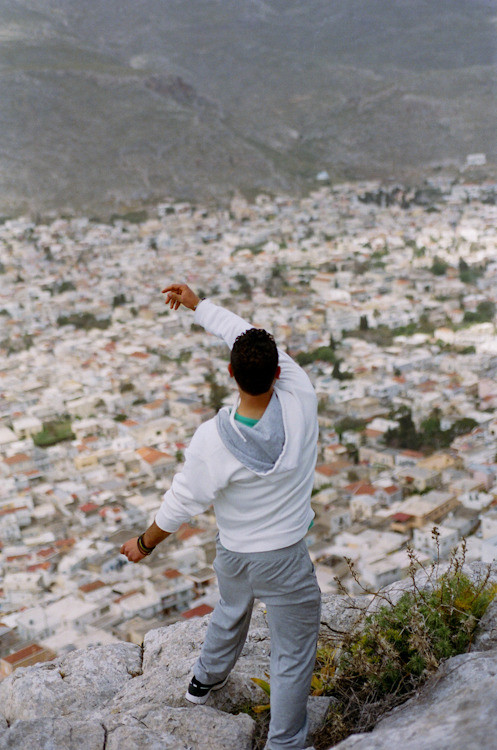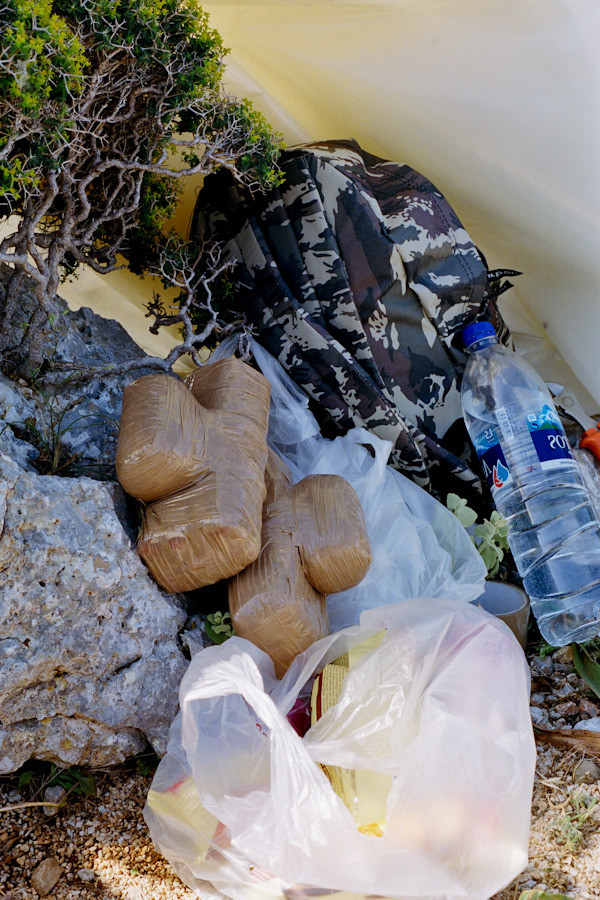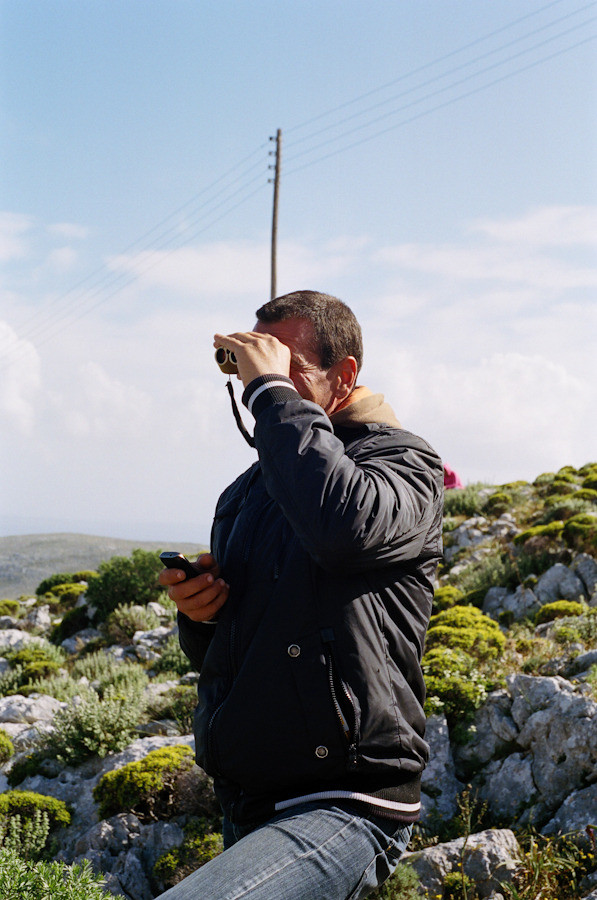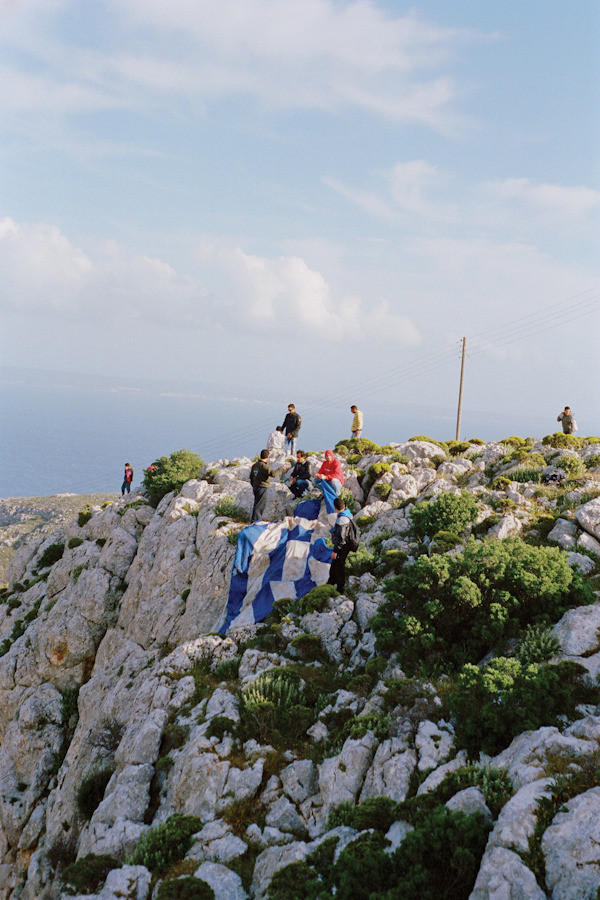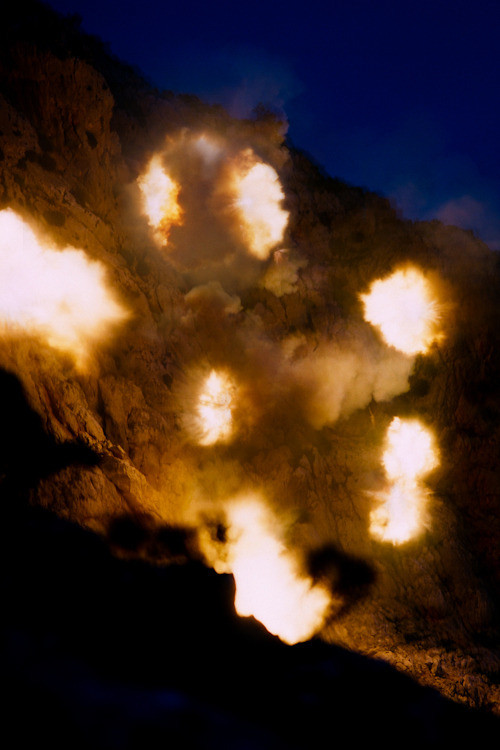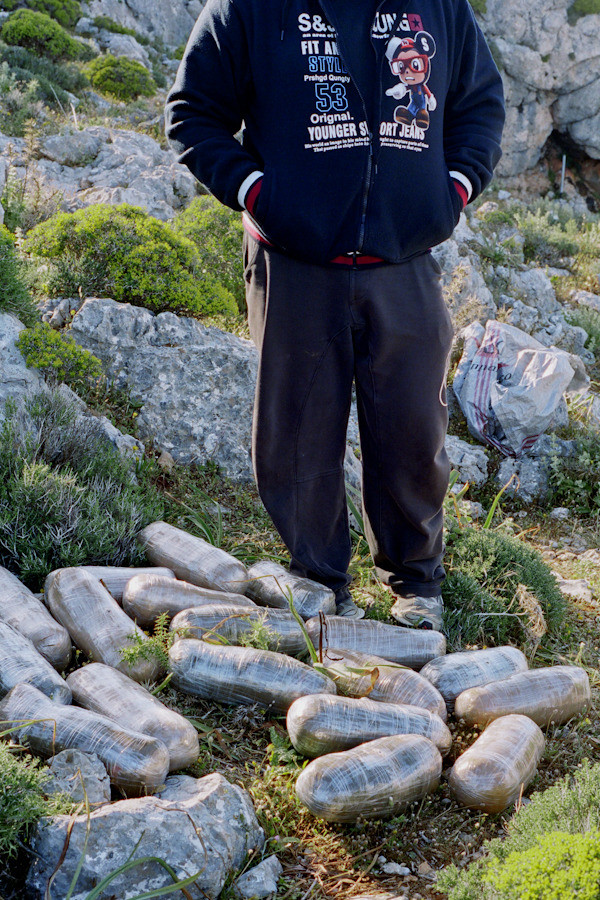Christos Anesti – Greek for "Christ is risen" – is a religious celebration-by-dynamite that takes place every year on Orthodox Easter, towards the end of March, on the small island of Kalymnos, which is part of a group of islands southeast of the Greek mainland. Across the Aegean Sea, you can see the outline of the Turkish coast.I took most of my pictures on Easter Sunday, but preparations for the celebration spread over several months. Participants import gunpowder from Turkey using speedboats and turn it into explosives in their garages. The guys then meet on a cliff overlooking the island to position their explosives in preparation for late-afternoon detonations. That night, they blast the explosives off the overlook, hundreds of feet above the houses below.
Annons
The whole thing is utterly mind-blowing and beautiful. The sound is deafening. You can feel the vibrations through your entire body for hours. Sometimes, windows on nearby houses shatter. Other times, the explosives rip whole chunks of rock from the cliff, hurling them at the participants or down onto the streets below. Screaming goes hand-in-hand with commemorating the Resurrection.A film of Lucas's experience of Christos AnestiOn the whole, Orthodox Christians are slightly more uptight than most moderate Catholics – this is because they still haven’t forgiven Judas. That’s him being set on fire in several of the pictures (the job of setting him alight is given to kids). Another thing about Greece is there is no separation between church and state, and there probably never will be.This ceremony is unique to Kalymnos. It takes a certain alignment of political and geographical factors to give birth to a tradition like this one. The island is rocky and doesn’t lend itself to any kind of growing – the traditional occupation here is sponge diving. After the end of the World War I, local sponge divers started finding undetonated bombs on sunken military aircraft and ships. They brought them to the surface, which is allegedly how the whole thing started.Participants in this celebration don’t claim any specific political agenda, yet it’s hard not to see Christos Anesti through a political lens. I mean, it’s not exactly innocuous for a bunch of guys to come together and say, "Hey, what if we turned this gunpowder into explosives, climbed to the island’s highest point and blew the shit up on the day of the Resurrection, right under the nose of our Muslim neighbours, with whom we have some outstanding territorial tensions?"
Annons

The political climate and the positions of various Greek parties have evolved so rapidly over the course of the last few years that it is impossible to comment on the leanings of those who celebrate Christos Anesti. When I spoke with the locals, I noticed a real rejection of politics. Several times, I heard people say, "We were born here; we’ll die here. Our bombs are way too important to waste on parliament." There was a palpable sense of pride that had a tendency to slip into a territorial mindset, but nothing close to the aforementioned brand of Greek nationalism. If anything, the graffiti I spotted tended to be anarchist or far-left.To this day, there is tension between Turkey and Greece over the islands of the Dodecanese, including Kalymnos. Take the story of the guy who, 30 years ago, planted a Greek flag on one of the micro-islands. Turkish nationals shot him down. Since then, a growing sense of identity and regionalism has developed along the border. And today, more than ever, Christos Anesti rings out like a warning message to the Turkish population:"Come on over. We’re ready for you."

I spent two weeks on the island, with the celebration toward the end of my stay. The participants kept pretty much in the shadows. I tried to organise meetings with them, but I kept being stood up. Finally, on the eve of Christos Anesti, I decided to climb up to the cliff myself and figure out where these guys were detonating their explosives.
Annons
I was one of the first to arrive at the top of the cliff on D-Day. No sooner had I arrived than three dudes started yelling at me in Greek. Farther away, I recognised some of the guys who had stood me up the previous week. It took me an hour to convince them that I’d keep a safe distance. Little by little, I was allowed to come closer, though the rule for my taking pictures remained the same throughout: "No faces."The guys were wary of the event becoming too popular, for fear their tradition would be compromised. This day is massively important to them – it’s how they let off steam. Some sported balaclavas, while others masked their faces with scarves. These guys wouldn’t let me come anywhere near them – in particular, the five or six guys who held up the Greek flag. Once again, I don’t want to be the one to put words in their mouths. They may be toying with symbols, but they claim no political agenda.

Christos Anesti is pretty much a dude fest. There was not a single woman on site during the explosions. The differences between men and women are cast in stone in these parts. Men and women have their place. Some women did eventually show up in the afternoon to deliver instant coffee and fireworks for the grand finale.At some point in the 1980s, there was an accident during one of the ceremonies. Back in the day, the explosives were blasted off a cliff on the other side of town. One of the guys thought the fuse on his explosive hadn’t ignited, so he threw it back onto the pile. But it had ignited, and a hundred explosives detonated at the same time, killing several people, seriously wounding others and tearing huge rocks off the cliff face.
Annons
A chapel was later built on the site and the dynamite-throwers decided to migrate away from the cursed hill, to a cliff on the other side of town. No problems were recorded the year of my visit, but accidents are common. I met one guy who had lost two fingers. Despite many casualties over the last 20 years, the movement is still going strong.More fun Easter celebrations:I Watched a Guy Get Crucified for Money on Easter SundayEaster in the MountainsWATCH – Girl Eats Food - Easter Special!
